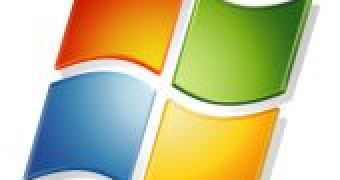While Windows 7 has yet to celebrate its first year on the market, Windows 8 has been in planning since early in 2009, well before Microsoft had signed off on its predecessor.
Certainly, at just 10 months since Windows 7’s GA (General Availability), and half a year before Windows 7 SP1, it is still far too early to talk Windows 8.
So early in fact, that the Redmond company has yet to reveal any sort of details on the next major iteration of Windows, let alone discuss anything specific.
According to speculation from various sources, the earliest that the public can hope to get a taste of Windows 8 is in mid-2011.
The software giant is reportedly planning the first Beta development milestone of Windows 7’s successor for the summer of next year.
This of course is a must if Microsoft wants to indeed deliver Windows 8 within three years since the release of Windows 7.
Directions on Microsoft Research Vice President Michael Cherry authored a list detailing his vision of must have Windows 8 features, in a report he shared with CIO.
Cherry’s wish list for Windows 8 contains a number of items that have long troubled Windows users, such as a variety of annoyances, from estimates of how long a copying operating will last to how many times Microsoft has shifted various features around the OS.
This is of course a must for Microsoft. Namely, to improve the user experience as much as possible, while simplifying the UI.
The software giant needs to focus on making core elements of Windows, such as burning a DVD, or uninstalling a program extremely intuitive to use and access, beyond the search box under the Start Menu.
Cherry also wants Microsoft to make error messages comprehensible for users or to remove them entirely.
"You end up having to put code in a search engine to find out what the problem is," Cherry stated.
"If you can't explain in an error message what went wrong and clearly indicate what to do about it, then you shouldn't have an error message."
At the same time, Cherry noted that Microsoft needs to introduce Windows 8 roles, the same it will undoubtedly feature Windows 8 Server roles.
Essentially, roles will help tailor the operating system to specific user experiences, such as making Windows 8 an OS for specialized media consuming slates.
"An interesting side effect of adding roles might be faster start-up times," Cherry revealed.
"If a person had a small netbook, and only installed the e-mail and Web browsing role, the OS might be able to start faster, because it only has to load the components for that role, and it doesn't have to install other components for features that are not needed."
Another item on Cherry’s wish list is close integration of Windows Phone 7 UI into Windows 8. Whether Microsoft will also embrace the Metro user interface from Windows Phone 7 with Windows 8, or stick with the evolution of Aero, remains to be seen.
Still, there are certainly scenarios in which an UI such as Metro would be better tailored to a Windows 8 device than Aero, such as tablet PCs.
Improved Power Management is also on the list, along with faster startup, shutdown, sleep and wake times.
And last, but definitely not least, Microsoft need to ship Windows 8 on time. What this means is that Windows 8 need to hit store sheslves no later than the end of 2012, or three years after Windows 7 GA.
But with Steven Sinofsky, President, Windows and Windows Live Division at the helm of the Windows project, it’s quite probable to have Windows 8 available within three years since Windows 7’s release.
As I’ve said above, users will most probably get a taste of Windows 8, complete with the feature list for the next generation of the Windows client when the Beta will drop in mid-2011. Quite a wait!
Fortunately enough Windows 7 is an excellent operating system, and more than capable of keeping users distracted until then.
But in the end, the one thing that Microsoft needs to do with Windows 8, is to ensure that it is better than Windows 7.

 14 DAY TRIAL //
14 DAY TRIAL //